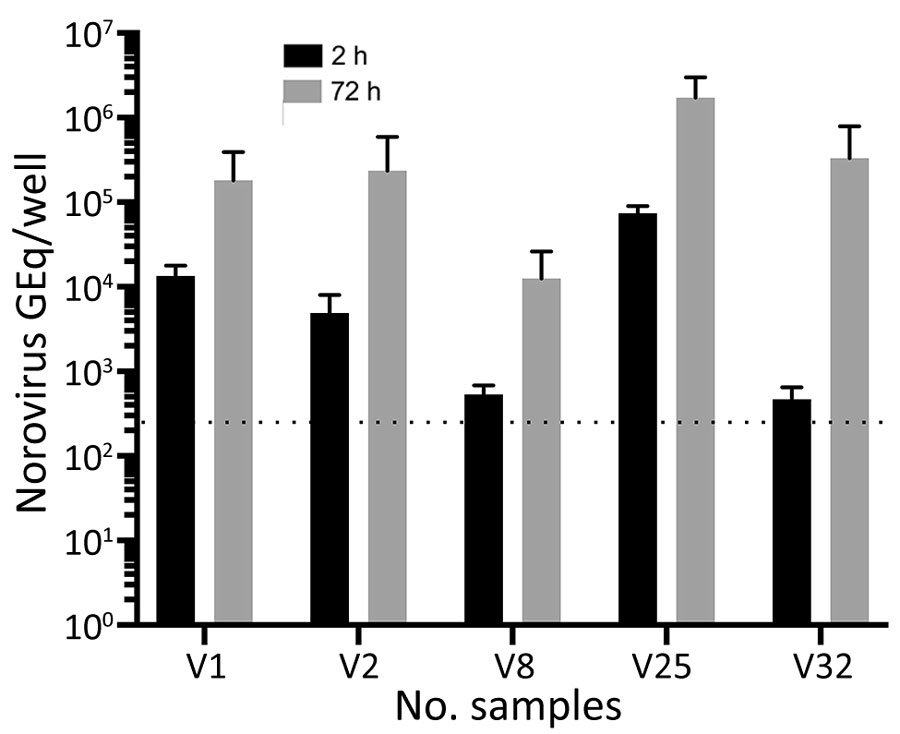Volume 27, Number 8—August 2021
Dispatch
Replication in Human Intestinal Enteroids of Infectious Norovirus from Vomit Samples
Figure

Figure. Replication in human intestinal enteroids of norovirus from vomit samples. Differentiated human intestinal enteroid monolayers were inoculated with norovirus-positive vomit samples. The number of norovirus GEq was quantified by reverse transcription quantitative PCR, 2 hours and 72 hours postinfection. Five of 20 vomit samples showed viral replication (defined as a >10-fold increase in the GEq). Data are presented as the mean +SD of biologic triplicates. The inoculum for vomit samples that demonstrated viral replication were as follows: V1, 7.9 × 106 GEq/well; V2, 1.4 × 106 GEq/well; V8, 1.2 × 105 GEq/well; V25, 1.6 × 107 GEq/well; and V32, 9.6 × 104 GEq/well. The dotted lines represent quantitative reverse transcription PCR limit of detection. GEq, genomic equivalent.